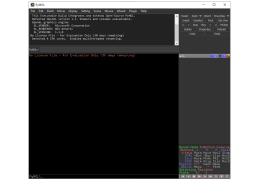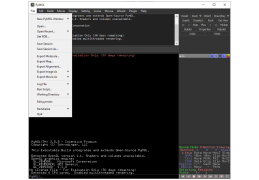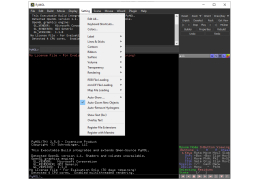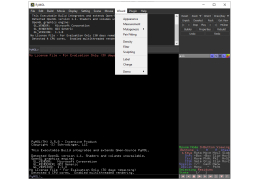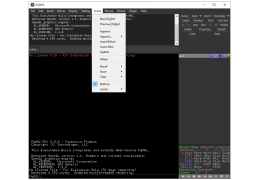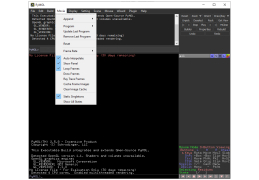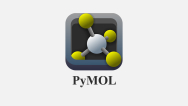
PyMOL
by DeLano Scientific LLC
PyMOL is a molecular visualization system and molecular modeling environment used for analyzing and displaying 3D molecular structures.
PyMOL is an open source molecular visualization system designed to enable users to visualize, animate, and analyze 3D molecular structures. It was created by Warren Lyford DeLano in 1998 and since then has become one of the most popular molecular visualization programs in the world. PyMOL is a commercial and open-source product, with a variety of versions ranging from a full-featured professional edition to a freely distributed academic version.
PyMOL's features include:
1. Structural Visualization: PyMOL enables users to visualize and manipulate 3D molecular structures. It supports a wide variety of file formats, including PDB, XYZ, CIF, and GRO. It offers powerful tools for manipulating structures, including rotating, zooming, and panning.
2. Rendering: PyMOL features several rendering styles, including ray-traced, cartoon, and stick. Users can customize the appearance of structures with a variety of colors and textures.
3. Animation: PyMOL supports the creation of animations, with support for a variety of file formats, including AVI, MPEG, and Flash.
4. Analysis: PyMOL offers a variety of analysis tools, including visualization of electrostatic potentials, surface analysis, and distance measurements.
5. Molecular Mechanics: PyMOL provides support for a variety of molecular mechanics models, including AMBER, CHARMM, and GROMACS.
6. Scripting: PyMOL supports a variety of scripting languages, including Python and Tcl. This allows users to write their own scripts to automate tasks or create custom visualizations.
7. Plugins: PyMOL provides a number of plugins that extend its functionality. These include plugins for visualization of protein-ligand complexes, calculation of Ramachandran plots, and analysis of electrostatic potentials.
8. Community Support: PyMOL has a large active user community, with a variety of mailing lists, forums, and tutorials.
PyMOL is an incredibly powerful and versatile molecular visualization program. It is easy to use and offers a wide variety of features and tools for visualizing, manipulating, and analyzing 3D molecular structures. Whether you are a professional chemist or just starting out, PyMOL is an excellent choice for your molecular visualization needs.
PyMOL's features include:
1. Structural Visualization: PyMOL enables users to visualize and manipulate 3D molecular structures. It supports a wide variety of file formats, including PDB, XYZ, CIF, and GRO. It offers powerful tools for manipulating structures, including rotating, zooming, and panning.
2. Rendering: PyMOL features several rendering styles, including ray-traced, cartoon, and stick. Users can customize the appearance of structures with a variety of colors and textures.
3. Animation: PyMOL supports the creation of animations, with support for a variety of file formats, including AVI, MPEG, and Flash.
4. Analysis: PyMOL offers a variety of analysis tools, including visualization of electrostatic potentials, surface analysis, and distance measurements.
5. Molecular Mechanics: PyMOL provides support for a variety of molecular mechanics models, including AMBER, CHARMM, and GROMACS.
6. Scripting: PyMOL supports a variety of scripting languages, including Python and Tcl. This allows users to write their own scripts to automate tasks or create custom visualizations.
7. Plugins: PyMOL provides a number of plugins that extend its functionality. These include plugins for visualization of protein-ligand complexes, calculation of Ramachandran plots, and analysis of electrostatic potentials.
8. Community Support: PyMOL has a large active user community, with a variety of mailing lists, forums, and tutorials.
PyMOL is an incredibly powerful and versatile molecular visualization program. It is easy to use and offers a wide variety of features and tools for visualizing, manipulating, and analyzing 3D molecular structures. Whether you are a professional chemist or just starting out, PyMOL is an excellent choice for your molecular visualization needs.
PyMOL allows for easy visualization and analysis of 3D molecular structures.
PyMOL is a program for interactive visualization and analysis of molecular structures. It is platform-independent and can be run on Windows, macOS, and Linux operating systems. It requires a modern processor and a 3D graphics card with at least 256 MB of video RAM. A minimum of 1 GB of RAM and 500 MB of free disk space is also recommended. PyMOL can be obtained as a free open source version or as a paid commercial version with additional features and support.
PROS
High-quality molecular visualizations and analyses.
Open-source with active user community.
Supports a wide array of file formats.
Open-source with active user community.
Supports a wide array of file formats.
CONS
Can have a steep learning curve for beginners.
Poor technical support response time.
Subscription can be expensive for individual users.
Poor technical support response time.
Subscription can be expensive for individual users.
Christopher F******q
I have used PyMOL software for several of my projects and I am overall satisfied with the results. It is quite user-friendly and provides interactive 3D graphics. I like the fact that PyMOL allows for the customization of graphical representations for molecular structures. It also provides a wide range of visualization options such as surface and volume rendering. I find the interface to be quite intuitive, making it easy for me to understand. The software allows for easy scripting and automation. Overall, I find PyMOL to be a great tool for visualizing protein structures.
Liam S.
PyMOL is a powerful tiol for visualizing and analysising structural bioologi data, it's very easy to use and user-friendly intercace, but some times it can be quite slow and laggy.
Max Ampofo
PyMOL is a molecular visualization software that allows users to create and manipulate 3D models of molecules. It features a powerful rendering engine that can generate high-quality images and animations, as well as a wide range of tools for analyzing and exploring molecular structures. Some of the main features of PyMOL include molecular graphics, surface generation, and molecular dynamics simulations. Users can also customize the software with plugins and scripts to suit their specific needs. Overall, PyMOL is a versatile and powerful tool for visualizing and analyzing molecular structures.
Cameron A******p
PyMOL software is a powerful tool for visualizing and analyzing molecular structures.
Andrew
Extremely effective for molecular visualization and analysis.
George
Intuitive, robust molecular visualization tool.
